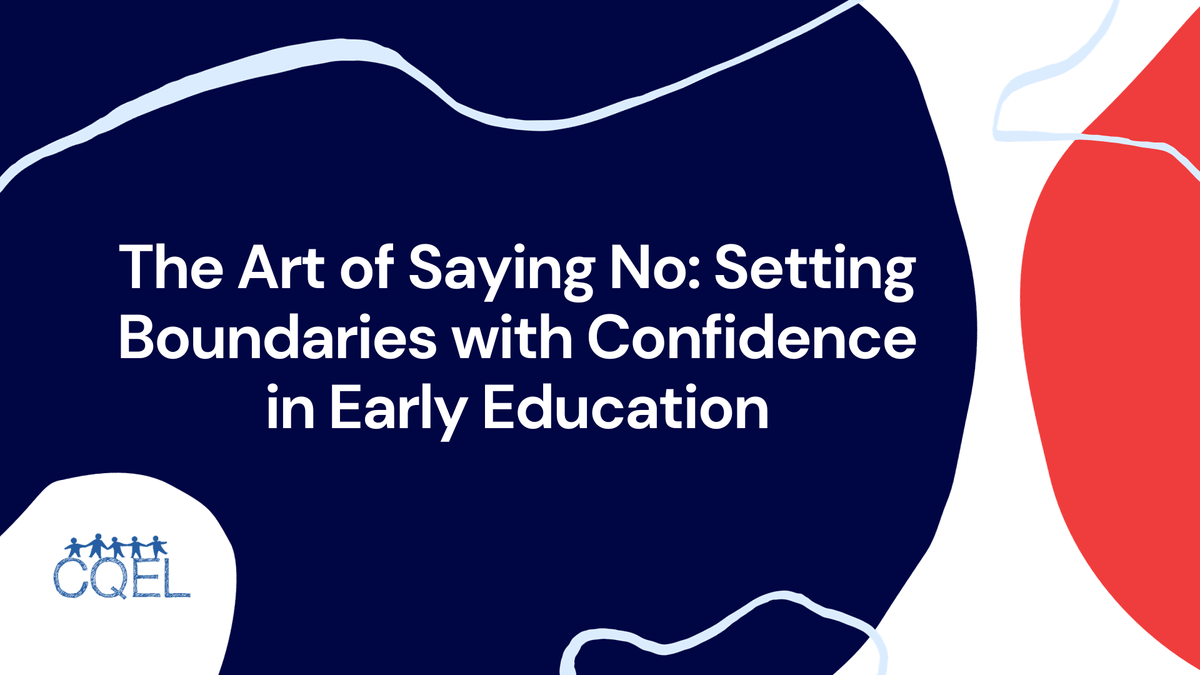The Art of Saying No: Setting Boundaries with Confidence in Early Education
Early ed chaos got you saying "yes" to everything? Master the art of confident 'no' for happy, independent learners! Discover why, how, & when. Say no to building a space where everyone thrives!

In the whirlwind of early education, where tiny hands tug at your shirt and endless requests fill the air, saying "no" can feel like a revolutionary act. But for those who care for young minds, setting boundaries with confidence is an essential art form. It's not about being a stone wall, but about building a sturdy bridge, one that fosters respect, nurtures independence, and guides children towards self-regulation.
Here are some brushstrokes to help you navigate the delicate dance of saying no:
1. Know your "why": Before the words escape your lips, take a beat to understand your reasoning. Is it a safety concern? A violation of classroom rules? Is it simply not the right time for a particular activity? Having a clear justification strengthens your resolve and gives children a reason to understand.
2. Choose your words wisely: Ditch the harsh "no way" and opt for gentle yet firm alternatives like, "I understand you want to play outside, but it's raining right now. We can play inside instead." This acknowledges their desire while setting a clear boundary.
3. Offer alternatives: Saying no doesn't have to be a dead end. Provide alternative activities or solutions that still meet their needs. Instead of saying no to a child who wants to climb a chair, offer them a sturdy climbing structure or a designated climbing area.
4. Be consistent and predictable: Children thrive on routine and predictability. Ensure your boundaries are consistent across different situations and caregivers. This builds trust and helps them understand your expectations.
5. Embrace natural consequences: Sometimes, the best no is a natural consequence. If a child throws a toy, letting it break without intervention teaches them a valuable lesson about responsibility. However, always ensure their safety and well-being are not compromised.
6. Remember, it's okay to say no to yourself: Setting boundaries isn't just for children. Saying no to overwork, to unreasonable demands, and to activities that drain your energy is crucial for your own well-being. A rested and empowered caregiver is better equipped to navigate the challenges of early education.
7. Foster open communication: Don't shy away from explaining your reasoning to children. Use age-appropriate language and encourage them to ask questions. This builds understanding and promotes a collaborative atmosphere.
8. Celebrate small victories: Setting boundaries is a journey, not a destination. Acknowledge and celebrate your successes, big and small. Each time you confidently say no, you build your own resilience and pave the way for a more respectful and nurturing environment for everyone.
Remember, saying no in early education isn't about control; it's about creating a safe space for learning and growth. By embracing this art form with confidence, you empower children to build self-regulation, navigate challenges, and ultimately, blossom into strong and independent individuals.
Further Resources:
- The Center on the Developing Child at Harvard University: https://www.developingchild.harvard.edu/: https://www.developingchild.harvard.edu/ provides research-based information on early childhood development, including tips on setting boundaries and fostering positive interactions.
- The book "Set Boundaries, Find Peace: A Guide to Reclaiming Yourself" by Nedra Glover Tawwab offers practical strategies for setting boundaries in all aspects of life.
Together, let's create early learning environments where saying no is not a wall, but a bridge, leading to greater respect, independence, and self-regulation for both children and caregivers.
